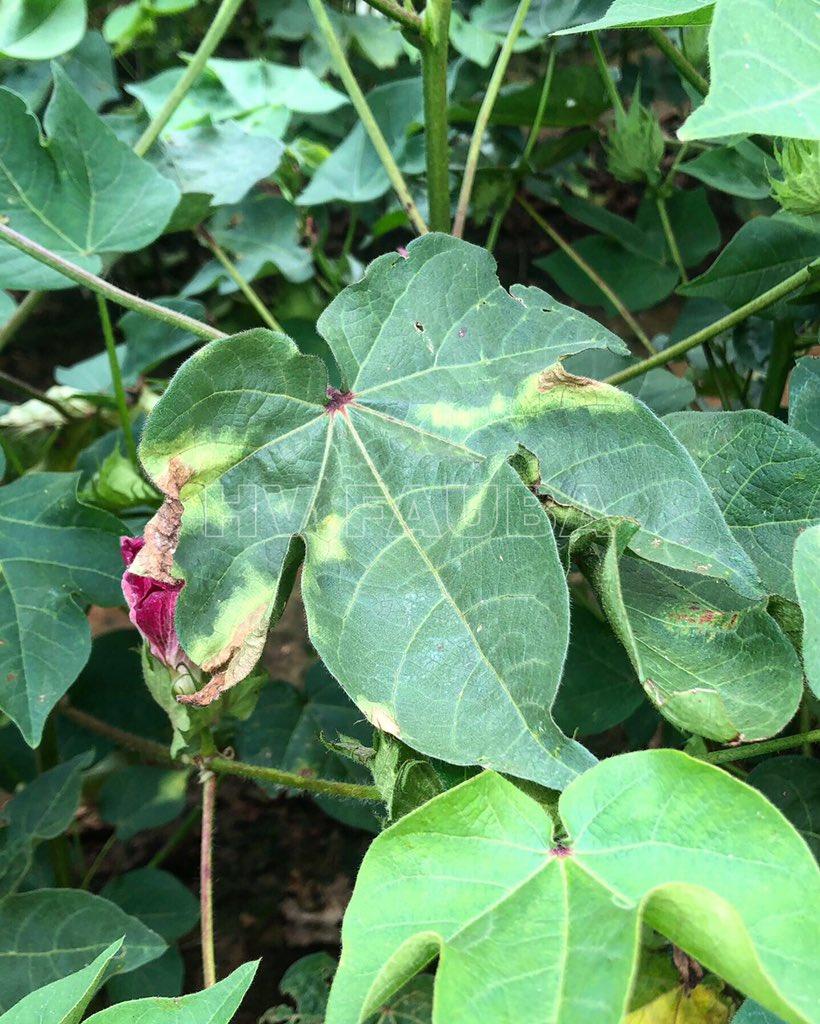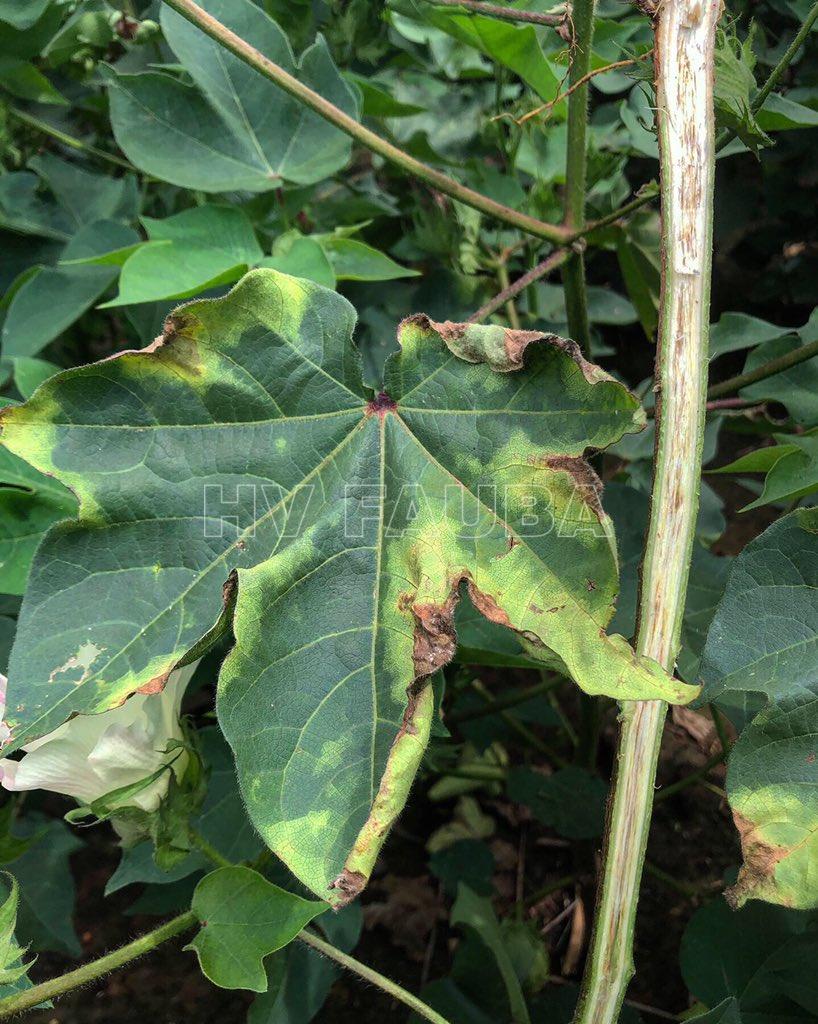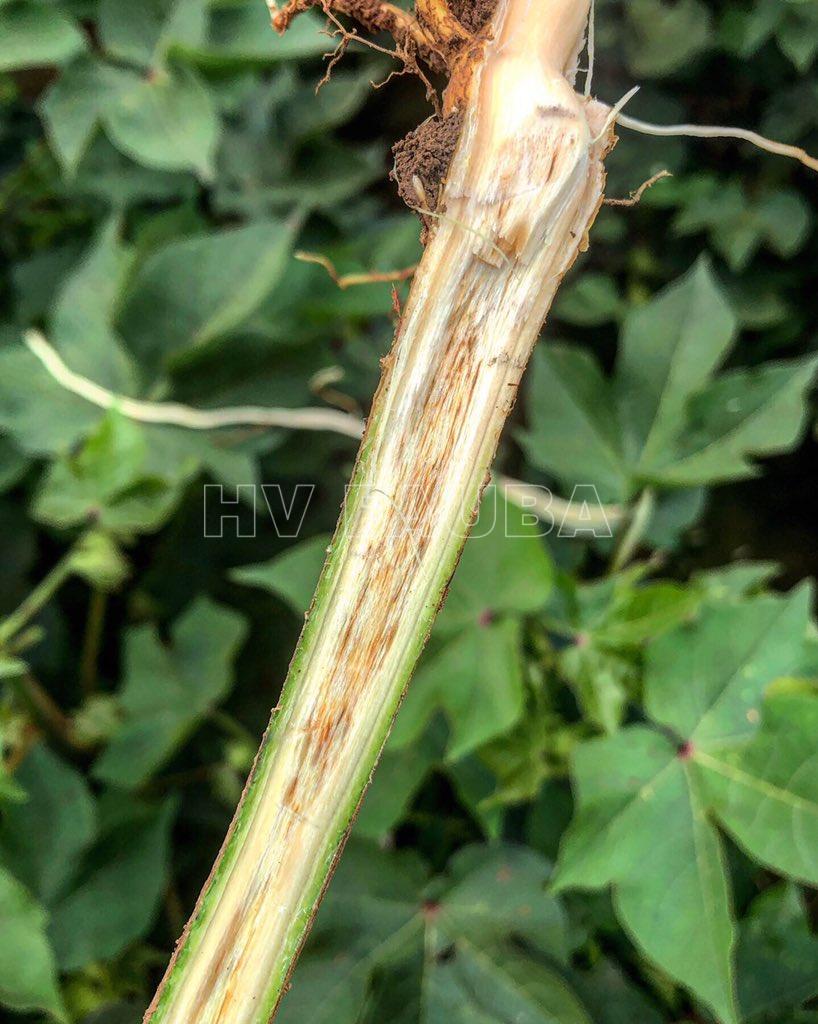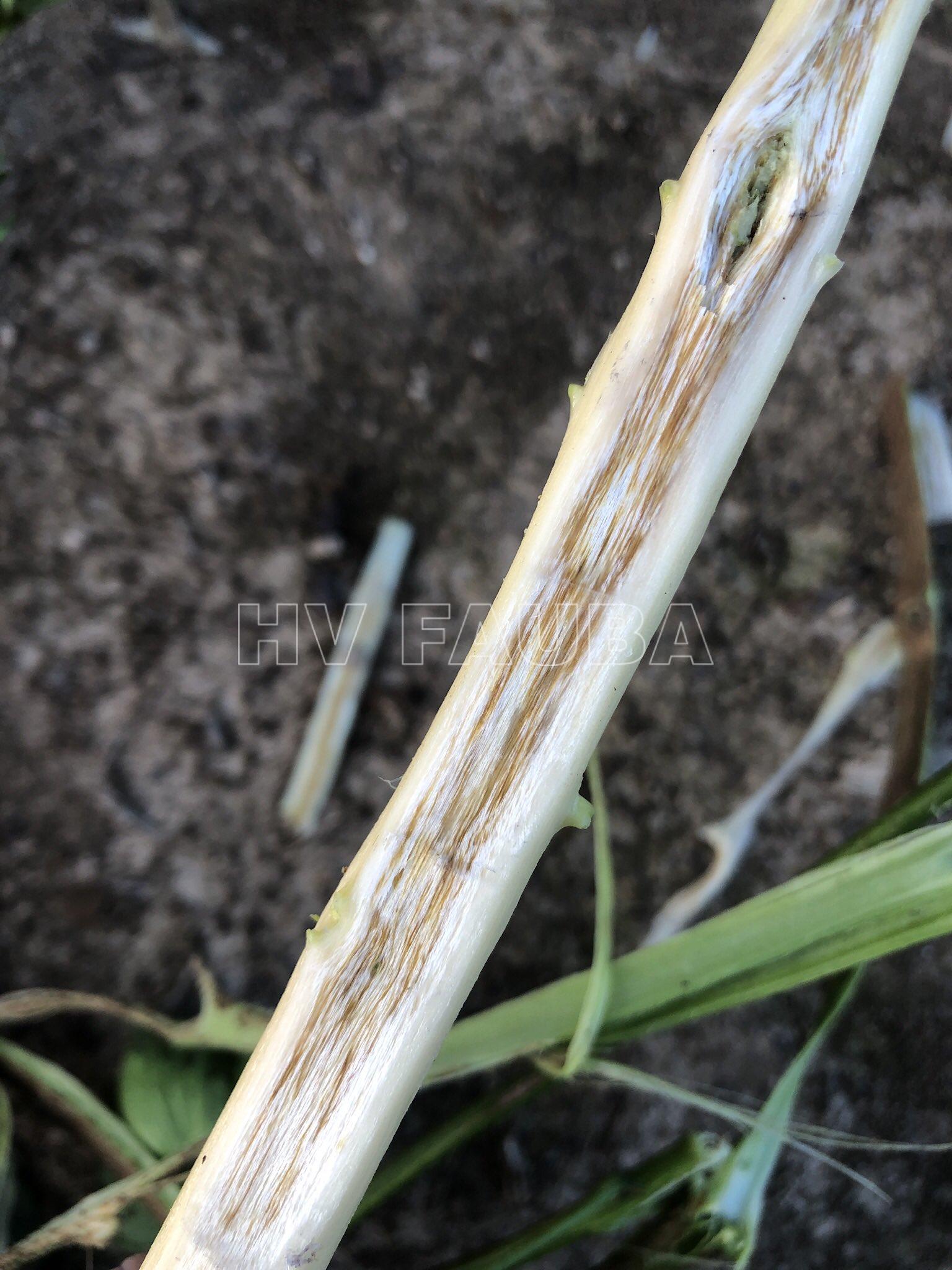.
Condición fitosanitaria: Presente
Grupo de cultivos: Industriales
Rango de hospedantes: amplio, no específico. Además del algodón, provoca importantes pérdidas de rendimiento en girasol, alcaucil o alcachofa (Cynara cardunculus L. var. scolymus), coliflor (Brassica oleracea var. botrytis L.), berengena (Solanum melongena L.), lechuga (Lactuca sativa L.), olivo (Olea europaea L.), papa (Solanum tuberosum L.), tabaco (Nicotiana tabacum L.), y tomate (Solanum lycopersicum L.), entre otros (Pegg y Brady, 2002). (**)
Especie hospedante: Algodón (Gossypium hirsutum)
Epidemiología: monocíclica, subaguda
Etiología: Hongo. Necrotrófico
Agente causal: Verticillium dahliae Klebahn (1913)
Taxonomía: Eukaryota > Fungi > Dikarya > Ascomycota > Pezizomycotina > Sordariomycetes > Hypocreomycetidae > Glomerellales > Plectosphaerellaceae > Verticillium
.
El género Verticillium sensu stricto corresponde a un grupo monofilético de taxa compuesto por V. dahliae que se ha conservado como el Verticillium tipo (Inderbitzin et al., 2011).
Verticillium se coloca en la familia Plectosphaerellaceae (Zare et al., 2007) que está estrechamente relacionada con Colletotrichum en las Glomerellaceae (Zhang et al., 2006), otro importante grupo de patógenos de plantas. Tanto Plectosphaerellaceae como Glomerellaceae son familias de posición filogenética incierta dentro de la subclase Hypocreomycetidae.
.
.
Síntomas
.
- Autor: Madison Cartwright
- Autor: Madison Cartwright
- Autor: Madison Cartwright
- Autor: Madison Cartwright
- Autor: Madison Cartwright
- Autor: Madison Cartwright
- Autor: Madison Cartwright
.
.
.
Bibliografía
Kandel SL, Henry PM, Goldman PH, et al. (2022) Composition of the Microbiomes from Spinach Seeds Infested or Noninfested with Peronospora effusa or Verticillium dahliae. Phytobiomes Journal 6: 169-180. doi: 10.1094/PBIOMES-05-21-0034-R
Li H, Gai X, Xu X, et al. (2025), Verticillium dahliae Secretory Aspartyl Protease VdSAP Targets Cotton GhARP to Modulate Plant Defence and Defoliation. Mol Plant Pathol, 26: e70085. doi: 10.1111/mpp.70085
, , , , , , et al (2021) Verticillium dahliae secreted protein Vd424Y is required for full virulence, targets the nucleus of plant cells, and induces cell death. Molecular Plant Pathology 00, 1– 12. doi: 10.1111/mpp.13100
Liu T, Qin J, Cao Y, et al. (2022) Transcription Factor VdCf2 Regulates Growth, Pathogenicity, and the Expression of a Putative Secondary Metabolism Gene Cluster in Verticillium dahliae. Appl Environ Microbiol.: e0138522. doi: 10.1128/aem.01385-22
, , , et al. (2023) The glycoside hydrolase 28 member VdEPG1 is a virulence factor of Verticillium dahliae and interacts with the jasmonic acid pathway-related gene GhOPR9. Molecular Plant Pathology 24: 1238–1255. doi: 10.1111/mpp.13366
Snelders NC, Boshoven JC, Song Y, et al. (2023) A highly polymorphic effector protein promotes fungal virulence through suppression of plant-associated Actinobacteria. New Phytol. 237(3): 944-958. doi: 10.1111/nph.18576
, , , et al. (2022) Verticillium diseases of vegetable crops in Brazil: Host range, microsclerotia production, molecular haplotype network, and pathogen species determination. Plant Pathology 71: 1417– 1430. doi: 10.1111/ppa.13562
, , , (2022) Development of a robust, VdNEP gene-based molecular marker to differentiate between pathotypes of Verticillium dahliae. Plant Pathology 71: 1404– 1416. doi: 10.1111/ppa.13559
, , , et al (2024) Overexpression of an NLP protein family member increases virulence of Verticillium dahliae. Plant Pathology 00: 1–12. doi: 10.1111/ppa.13870
, , , , (2022) Scarcity of major resistance genes against Verticillium wilt caused by Verticillium dahliae. Plant Breeding: 1– 14. doi: 10.1111/pbr.13046
, , , et al (2024) The secreted feruloyl esterase of Verticillium dahliae modulates host immunity via degradation of GhDFR. Molecular Plant Pathology 25: e13431. doi: 10.1111/mpp.13431
Xiao L, Tang C, Klosterman SJ, Wang Y (2023) VdTps2 Modulates Plant Colonization and Symptom Development in Verticillium dahliae. Mol Plant Microbe Interact. 36(9): 572-583. doi: 10.1094/MPMI-03-23-0024-R
Yang W, Zheng L, Liu H-X, et al. (2014) Evaluation of the effectiveness of a consortium of three plant-growth promoting rhizobacteria for biocontrol of cotton Verticillium wilt. Biocontrol. Sci. Technol. 24: 489–502. doi: 10.1080/09583157.2013.873389






